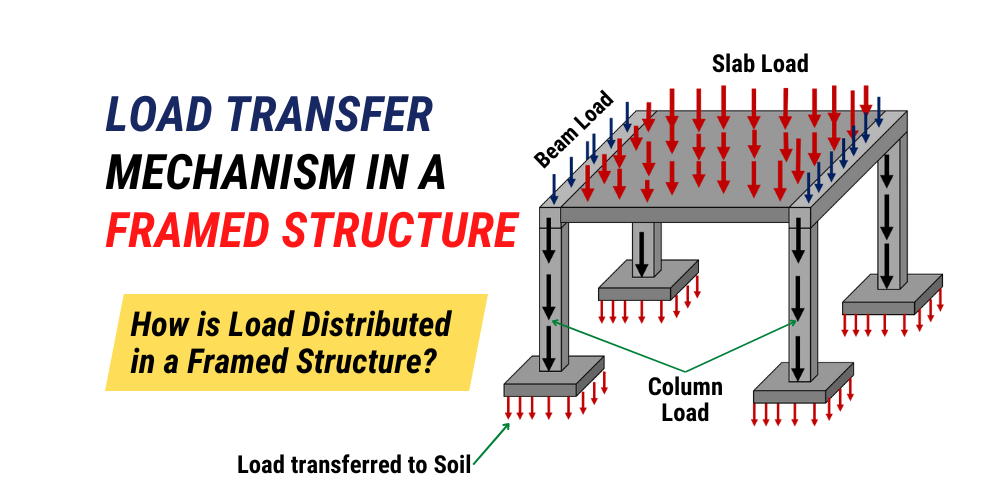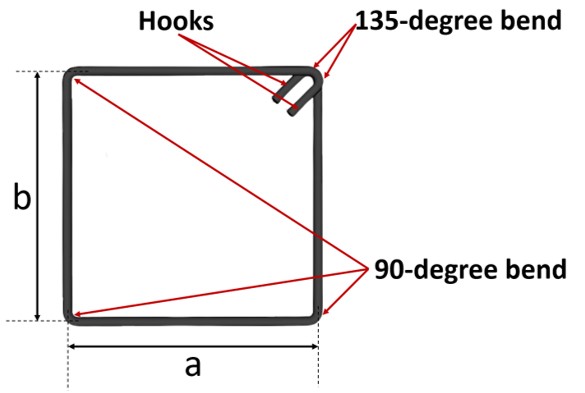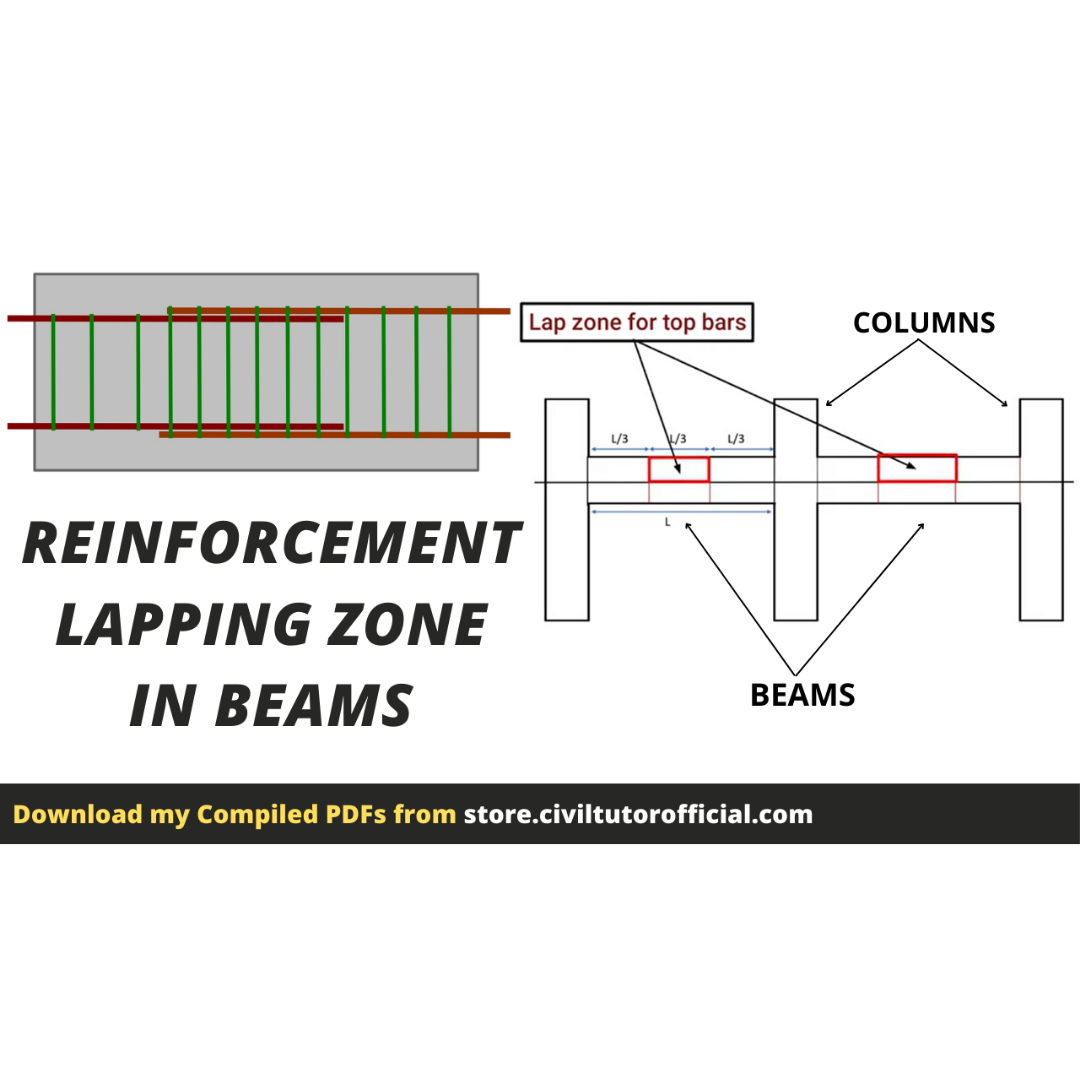When constructing a building, it’s very crucial to ensure a foundation that is stable and can withstand the loads exerted upon it. Footings play an important role in transfering the weight of the structure to the ground. There are different types of footings available, each having its own set of advantages and applications. In this article, we will explore the reasons why trapezoidal footings are often preferred over pad footings in various construction projects. Definition and Purpose of Footings Footings are structural elements that are casted below ground level to…
Read MoreThe Math Behind Load Transfer Mechanisms in Framed Structures
What is a Framed Structure? A framed structure is a type of construction that is made up of various structural elements, such as slabs, beams, columns, and foundations, that work together to transfer and distribute loads throughout the building. Load Transfer Mechanism in Framed Structures: The load transfer mechanism in a framed structure refers to the way that loads are transmitted from one element to another and eventually to the ground. In a framed structure, loads are introduced into the structure through various means, such as gravity, wind, earthquakes, and…
Read MoreHow to calculate the quantity of materials in plaster?
How to calculate the quantity of materials in plaster? Plastering is a crucial step in any construction project as it provides a smooth and even finish to walls and ceilings. To calculate the quantity of cement and sand required for plastering, you will need to know the area of the wall or ceiling that needs to be plastered and the thickness of the plaster layer. You will also need to decide on the ratio of cement to sand that you want to use. For wall plaster, the common ratio is…
Read MoreWhat is Strong column weak beam concept?
Structural engineering is a field that involves the design and construction of structures such as buildings, bridges, and other large-scale projects. One important principle that is often used in this field is the concept of “strong columns and weak beams.” This concept suggests that the columns of a structure should be designed to be stronger and more rigid than the beams. This is because columns are typically subjected to compressive forces, which try to push them inward, while beams are subjected to bending and flexural stresses, which try to deform…
Read MoreWhy do we prefer Under-Reinforced sections over Balanced or Over-Reinforced sections?
When it comes to designing RCC beams, there are several options to consider when it comes to the amount of reinforcement used. Generally, we have 3 types of sections. i.e. In this article, I’m going to explain to you all the three sections in detail and at the end, we will discuss, Why do we prefer Under-Reinforced sections over Balanced or Over-Reinforced sections? 1. Balanced Section: If we talk about the Balanced section, this type of section is designed in such a way that, if we apply load on…
Read MoreDifference between Load-Bearing structure and Framed structure
The two most common structural systems used in building construction are load-bearing structures and framed structures. In load-bearing structures the walls are designed to carry the weight of the building, transferring it directly to the earth. In contrast, a framed structure is a type of building design where the load is carried by an external frame or skeleton. The external frame of a framed structure is made up of columns and beams that are connected together to form a grid-like structure. The walls of a framed structure are typically non-load…
Read MoreImportant points related to the Design of Beams
Important points related to the Design of Beams In this article, I’m going to discuss some important points related to the design of RCC beams which are going to be very much helpful to all of you. As per IS 13920-2016, Cl 6.1.1; For beams of rectangular cross-section, It shall always be preferred to have a Width to Depth ratio greater than 0.3. i.e., If Bw is the width of beam and D be its depth; Bw/D > 0.3 While deciding the size of an RCC beam, The minimum width…
Read MoreBBS OF 2L Rectangular Stirrups
BBS OF 2L Rectangular Stirrups In this article, I’m going to discuss, how to calculate the cutting length of a rectangular stirrup. Before proceeding with the calculations, let me introduce you to the components of a Stirrup or a Tie. As you can clearly visualize from the above picture, a rectangular stirrup is bent at 3 of its corners by an angle of 90 degrees, and 2 number of 135-degree bends along with 2 number of hooks given at the 4th corner. Example: Calculate the cutting length of a rectangular…
Read MoreImportant concepts related to the design of columns (Every Civil Engineer must know)
Important concepts related to the design of columns Columns play an important role in a building structure. Their main function is to carry the loads from the superstructure and finally transmit the load to the foundation. In this article I’m going to discuss some important concepts related to the design of RCC columns in which I will discuss the definition of a column as per the code, what are long columns and short columns, the Detailing of reinforcement for columns, and finally I will discuss the terms Nominal Cover, Clear…
Read MoreReinforcement lapping zone in Beams
Lapping zone in Beams: As I have already told you in my previous article, If the span of a structural member needs to be increased beyond the standard length (12m) of the reinforcement bar, then we must increase the length of bars by adding extra steel bars. The most important thing, we can’t add the bars directly from end to end to avoid the risk of steel sliding out of concrete. That’s why we overlap the bars at certain points to allow a smooth transfer of loads from one bar…
Read More









